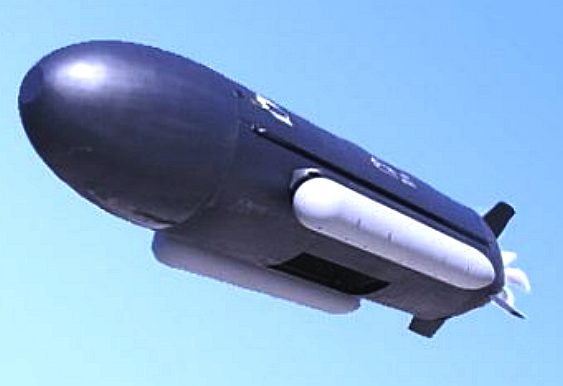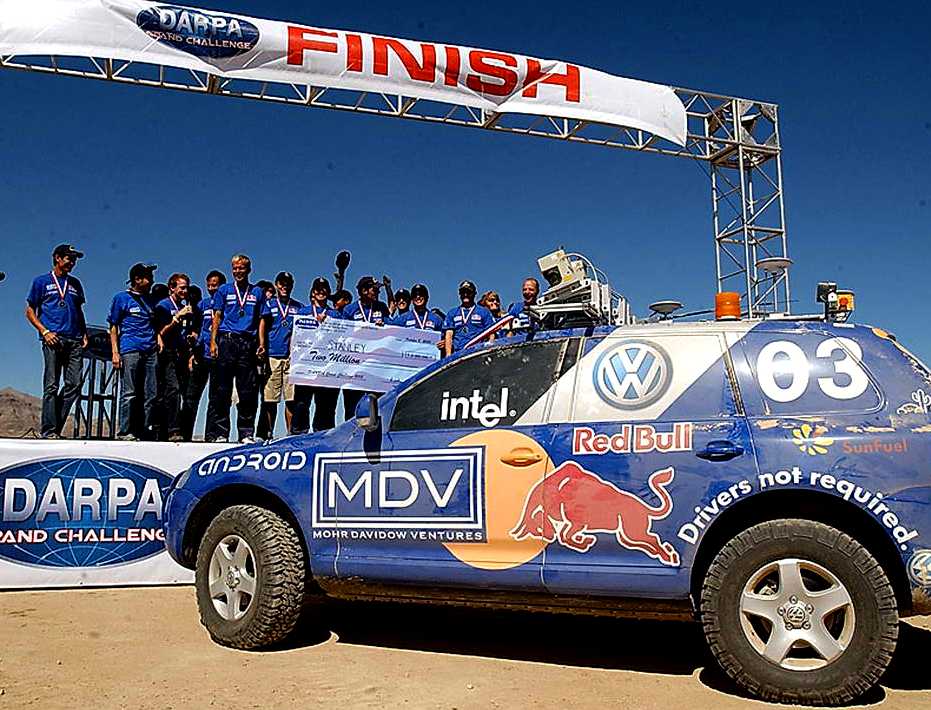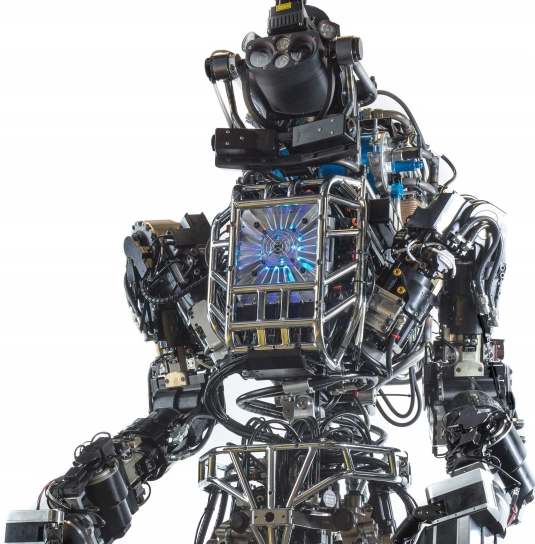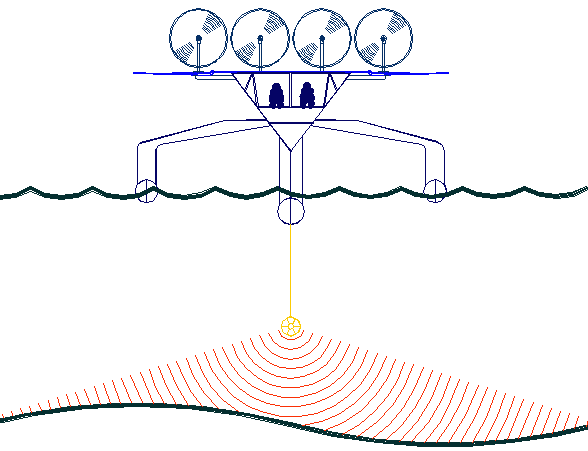
HYDRA
JULY
2013 -
DARPA considers unmanned submersible mothership designed to deploy UAVs and UUVs
Unmanned vehicles designers at the U.S. Defense Advanced Research Projects Agency (DARPA) in Arlington, Va., will brief industry next month on a project to develop an unmanned submersible designed to transport and deploy unmanned aerial vehicles (UAVs) and unmanned underwater vehicles (UUVs) stealthily close to enemy operations.
DARPA will conduct industry briefings on the Hydra program from 8 a.m. to 5 p.m. on 5 Aug. 2013 at the Johns Hopkins University Applied Physics Laboratory – Kossiakoff Center in Laurel, Md. Briefings will precede release on a broad agency announcement (BAA) for the Hydra program, DARPA officials say.
The Hydra program will develop and demonstrate an unmanned undersea system with a new
kind of unmanned-vehicle delivery system that inserts UAVs and UUVs. stealthily into operational environments to respond quickly to situations around the world without putting U.S. military personnel at risk.
The
system that DARPA envisage is not that far removed from Bluefish-SNAV
Dragonfly with the ROV autonomous deployment and recovery add-on that is
currently under development by Bluebird Marine Systems (seen on this
site from February 2013) all save the covert element, which would mean
developing the stealth
capability of the Bluefish platform.
The Hydra program
will seek to develop and demonstrate not only the unmanned vehicle mothership, but also examples of the UAVs and UUVs that could be carried into battle covertly.
The rising number of ungoverned states, piracy, and proliferation of sophisticated defenses severely stretches current resources and influences U.S. military capability to conduct special operations and contingency missions, DARPA scientists say.
The Hydra program represents a way to add undersea capacity that can be tailored to support each mission. Technologies are to be adaptable to several different delivery options, including airborne, surface, and subsurface. The Hydra program could enable other new capabilities not currently performed from undersea, DARPA officials explain.
The program will demonstrate individual high-risk components and systems before the military commits to a specific full-system approach, and refine technologies prior to operational demonstrations of the UAV and UUV payloads.
Hydra will have three phases. First, the program will define concepts, develop component capabilities, and reduce subsystem risks with one or more contracts in several technical areas. Later, the program will develop and test a full system. Technical areas involve modular enclosures, air vehicle payloads, undersea payloads, concepts of operation, and supporting technologies.
Modular enclosures will host Hydra payloads and provide a means to transport, house, and launch them. It will be a payload-agnostic “mission truck” that will provide basic services and support to individual payloads. It will operate in shallow coastal waters and harbors for extended periods.
Subsystems will include ballast system, energy, communications, command and control, propulsion, the ability to accommodate different payloads, and measures for long-duration submerged operations. It will deploy its UAVs and UUVs without surfacing, and maintain communications throughout its mission.
The air vehicle payload will feature encapsulated air vehicles that fit into the standard Hydra modular enclosure. The air vehicle payload that will be ejected from the mothership, float to the surface, launch, fly a minimum range, and conduct several different types of missions.
Undersea payloads will launch, dock, and recharge from the mothership and collect intelligence information. After their missions they will download information to the mothership, which will communicate it to command authorities.
Concepts of operation will involve Hydra deployment and retrieval using submarines and transport aircraft; command, control, and communications architectures, and the potential effectiveness of Hydra UAV and UUV payloads.
The Hydra industry briefings on 5 Aug. are to provide information on the Hydra program, address questions from potential proposers, and to provide a forum for potential proposers to present their capabilities and explore teaming opportunities. One-on-one discussions with the DARPA Hydra program manager will be available on a first, come first-served basis.
DARPA also is hosting a classified meeting for eligible attendees immediately after the main unclassified session, but prior to one-on-one discussions.
Email questions or concerns to DARPA-SN-13-42@darpa.mil
The Hydra program manager is Scott Littlefield, and the contracting officer is Christopher Glista.

HOW
IT ALL STARTED
The Defense Advanced Research Projects Agency (DARPA) is an agency of the United States Department of Defense responsible for the development of new technologies for use by the military. DARPA has been responsible for funding the development of many technologies which have had a major effect on the world, including computer networking, as well as NLS, which was both the first hypertext system, and an important precursor to the contemporary ubiquitous graphical user interface.
DARPA began as the Advanced Research Projects Agency (ARPA) created in 1958 by President Dwight D. Eisenhower for the purpose of forming and executing research and development projects to expand the frontiers of technology and science and able
to reach far beyond immediate military
requirements. The administration was responding to the Soviet launching of Sputnik 1 in 1957, and ARPA's mission was to ensure U.S. military technology be more
sophisticated than that of the nation's potential enemies. From DARPA's own introduction,
DARPA’s original mission, established in 1958, was to prevent technological surprise like the launch of Sputnik, which signaled that the Soviets had beaten the U.S. into space. The mission statement has evolved over time. Today, DARPA’s mission is still to prevent technological surprise to the US, but also to create technological surprise for our enemies.
ARPA, was renamed to "DARPA" (for Defense) in March 1972, then renamed "ARPA" in February 1993, and then renamed "DARPA" again in March 1996.
DARPA is independent from other more conventional military research and development and reports directly to senior Department of Defense management. DARPA has around 240 personnel (about 140 technical) directly managing a $2.8 billion budget. These figures are "on average" since DARPA focuses on short-term (two to four year) projects run by small, purpose-built teams.

PROJECTS
* ACTUV: A project to build an unmanned Anti-submarine warfare vessel.
* Adaptive Vehicle Make: Revolutionary approaches to the design, verification, and manufacturing of complex defense
systems and vehicles.
* ArcLight: Ship-based weapon system that is capable of striking targets nearly anywhere on the globe. It is based
on the Standard Missile 3.
* Atlas: A humanoid robot.
* Battlefield Illusion
* BigDog/Legged Squad Support System: legged robots.
* Boeing X-37
* Integrated Sensor is Structure
* Boomerang (mobile shooter detection system): an acoustic Gunshot Location Detection System developed by BBN
Technologies for detecting snipers on military combat vehicles.
* CALO or "Cognitive Assistant that Learns and Organizes": software
* Combat Zones That See: "track everything that moves" in a city by linking up a massive network of surveillance
cameras
* Cognitive Technology Threat Warning System
* DARPA XG: technology for Dynamic Spectrum Access for assured military communications
* EATR An autonomous tactical robotic system
* FALCON
* High Energy Liquid Laser Area Defense System
* High Productivity Computing Systems
* Human Universal Load Carrier battery-powered human exoskeleton
* MAHEM Molten penetrating munition
* MEMS Exchange MEMS Implementation Environment
* MeshWorm, an earthworm-like robot.
* Mind's Eye: A visual intelligence system capable of detecting and analysing activity from video feeds.
* Persistent Close Air Support
* Phoenix: A satellite project with the aim to recycle retired satellite parts into new on-orbit assets. Launches in
2016.
* Protein Design Processes
* Proto 2: a thought-controlled prosthetic arm
* Remote-controlled insects
* DARPA Silent Talk: A planned program attempting to identify EEG patterns for words and transmit these for covert
communications.
* Satellite Remote Listening System: a satellite mounted system that can eavesdrop on a targeted area on the
surface of the planet in coordination with satellite cameras. This project is in its infant stage.
* SyNAPSE: Systems of Neuromorphic Adaptive Plastic Scalable Electronics
* System F6: Fractionated Spacecraft demonstrator
* XOS: powered military exoskeleton
* Transformer: flying armoured car
* UAVForge
* VTOL X-Plane
* Vulture
* WolfPack
* XDATA: Processing and analyzing vast amounts of information.

HISTORY
1950 >
The creation of DARPA was authorized by President Eisenhower in 1958 for the purpose of forming and executing research and development projects to expand the frontiers of technology and science, and able to reach far beyond immediate military requirements., the two relevant acts being the Supplemental Military Construction Authorization (Air Force) (Public Law 85-325) and Department of Defense Directive 5105.15, in February 1958. Its creation was directly attributed to the launching of Sputnik and to U.S. realization that the Soviet Union had developed the capacity to rapidly exploit military technology.
Additionally, the political and defense communities recognized the need for a high-level Department of Defense organization to formulate and execute R&D projects that would expand the frontiers of technology beyond the immediate and specific requirements of the Military Services and their laboratories. In pursuit of this mission, DARPA has developed and transferred technology programs encompassing a wide range of scientific disciplines which address the full spectrum of national security needs.
From 1958 to 1965, ARPA's emphasis centered on major national issues, including space, ballistic missile defense, and nuclear test detection. During 1960, all of its civilian space programs were transferred to the National Aeronautics and Space Administration (NASA) and the military space programs to the individual Services.
This allowed ARPA to concentrate its efforts on the Project Defender (defense against ballistic missiles), Project Vela (nuclear test detection), and Project AGILE (counterinsurgency R&D) Programs, and to begin work on computer processing, behavioral sciences, and materials sciences. The DEFENDER and AGILE Programs formed the foundation of DARPA sensor, surveillance, and directed energy R&D, particularly in the study of radar, infrared sensing, and x-ray/gamma ray detection.
ARPA at this point (1959) played an early role in Transit (also called NavSat) a predecessor to the Global Positioning System
(GPS). "Fast-forward to 1959 when a joint effort between DARPA and the Johns Hopkins Applied Physics Laboratory began to fine-tune the early explorers’ discoveries. TRANSIT, sponsored by the Navy and developed under the leadership of Dr. Richard Kirschner at Johns Hopkins, was the first satellite positioning system."
During the late 1960s, with the transfer of these mature programs to the Services, ARPA redefined its role and concentrated on a diverse set of relatively small, essentially exploratory research programs. The agency was renamed the Defense Advanced Research Projects Agency (DARPA) in 1972, and during the early 1970s, it emphasized direct energy programs, information processing, and tactical technologies.
Concerning information processing, DARPA made great progress, initially through its support of the development of time-sharing (all modern operating systems rely on concepts invented for the Multics system, developed by a cooperation among Bell Labs, General Electric and MIT, which DARPA supported by funding Project MAC at MIT with an initial two-million-dollar grant).
DARPA supported the evolution of the ARPANET (the first wide-area packet switching network), Packet Radio Network, Packet Satellite Network and ultimately, the Internet and research in the artificial intelligence fields of speech recognition and signal processing, including parts of Shakey the robot. DARPA also funded the development of the Douglas Engelbart's NLS computer system and The Mother of All Demos; and the Aspen Movie Map, which was probably the first hypermedia system and an important precursor of virtual reality.

1970
>
The Mansfield Amendment of 1973 expressly limited appropriations for defense research (through ARPA/DARPA) to projects with direct military application. Some contend that the amendment devastated American science, since ARPA/DARPA was a major funding source for basic science projects of the time; the National Science Foundation never made up the difference as expected.
The resulting "brain drain" is also credited with boosting the development of the fledgling personal computer industry. Many young computer scientists fled from the universities to startups and private research labs like Xerox PARC.
From 1976 to 1981, DARPA's major thrusts were dominated by air, land, sea, and space technology, tactical armor and anti-armor programs, infrared sensing for space-based surveillance, high-energy laser technology for space-based missile defense,
antisubmarine warfare, advanced cruise missiles, advanced aircraft, and defense applications of advanced computing. These large-scale technological program demonstrations were joined by integrated circuit research, which resulted in submicrometer electronic technology and electron devices that evolved into the Very Large Scale Integration (VLSI) Program and the Congressionally mandated charged particle beam program.
Many of the successful programs were transitioned to the Services, such as the foundation technologies in automatic target recognition, space based sensing, propulsion, and materials that were transferred to the Strategic Defense Initiative Organization (SDIO), later known as the Ballistic Missile Defense Organization (BMDO), now titled the Missile Defense Agency
(MDA).
1980 >
During the 1980s, the attention of the Agency was centered on information processing and aircraft-related programs, including the National Aerospace Plane (NASP) or Hypersonic Research Program. The Strategic Computing Program enabled DARPA to exploit advanced processing and networking technologies and to rebuild and strengthen relationships with universities after the Vietnam War. In addition, DARPA began to pursue new concepts for small, lightweight satellites (LIGHTSAT) and directed new programs regarding defense manufacturing, submarine technology, and armor/anti-armor.
2000
>
On October 28, 2009 the agency broke ground on a new facility in Arlington, Virginia a few miles from the Pentagon.
In fall 2011, DARPA hosted the 100-Year Starship Symposium with the aim of getting the public to start thinking seriously about interstellar travel.
LINKS
& REFERENCE
http://www.fbo.gov/index?s=opportunity&mode=form&tab=core&id=f99b89f85139680dc1cdb0c49a22dde9&_cview=1 http://www.militaryaerospace.com/articles/2013/07/darpa-uuv-mothership.html
http://nosint.blogspot.co.uk/2013/07/darpa-considers-unmanned-submersible.html
http://airsoc.com/articles/view/id/51f6a7809aad9d6f20000002/darpa-hydra-unmanned-submarine-to-deploy-drones#.Uhfr1NKsg6Y
http://en.wikipedia.org/wiki/DARPA
http://www.darpa.mil/
http://www.science.mod.uk/Engagement/the_portal.aspx http://www.science.mod.uk/Engagement/enterprise.aspx https://www.dstl.gov.uk/centrefordefenceenterprise https://www.dstl.gov.uk
UKHO
http://www.maritimejournal.com/news101/industry-news/ukho-appoints-new-national-hydrographer http://en.wikipedia.org/wiki/United_Kingdom_Hydrographic_Office http://www.ths.org.uk http://www.spri.cam.ac.uk/friends/committee/ http://www.thefutureofnavigation.com/ten_steps.aspx
https://www.dstl.gov.uk/insight
US
Department of Navy Research, development & Acquisition - http://acquisition.navy.mil/ US
Fleet Forces Command - http://www.cffc.navy.mil/
US
http://www.msc.navy.mil/

PATENT
PENDING - The
key to accurate hydrographic mapping is continuous monitoring,
for which the Bluefish SNAV
platform, presently under development, is a robotic ocean workhorse. Based on a stable
SWASH
hull this design is under development in the UK, looking for international
agents and partners. The robot
ship uses no diesel fuel to monitor the oceans autonomously (COLREGS
compliant) at relatively high
speed 24/7 and 365 days a year - only possible with the revolutionary (patent) energy harvesting system. The
hullform is ideal for automatic release and recovery of ROVs
or towed arrays, alternating between drone and fully autonomous modes.
International development partners are welcome. This vessel
pays for itself in fuel saved every ten years.
|





